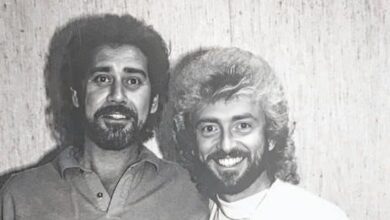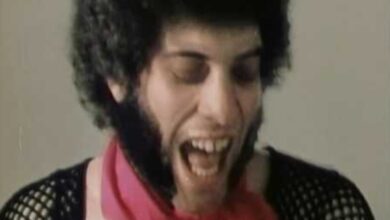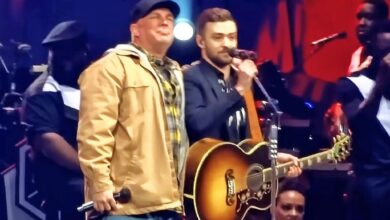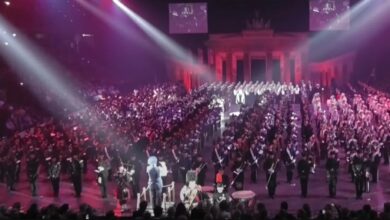Bee Gees’ ‘How Deep Is Your Love’ Transcends Pop Boundaries in 1977 with Soulful Sophistication
When “How Deep Is Your Love” was released in September 1977, the Bee Gees had already begun to cement their reputation as musical chameleons. But this particular track, penned for the Saturday Night Fever soundtrack, became something more than just a chart hit—it was an emotional benchmark, a soulful exploration of vulnerability and devotion that bridged pop, R&B, and soft rock in one masterstroke. The song spent 17 weeks on the Billboard Hot 100, peaking at No. 1 in December, and would go on to become one of the defining love ballads of the decade, eventually earning a Grammy for Best Pop Performance by a Duo or Group with Vocals in 1978.
By the time they recorded “How Deep Is Your Love,” the Bee Gees—comprising brothers Barry, Robin, and Maurice Gibb—had undergone several stylistic reinventions. Originally rooted in British Invasion pop and baroque rock, they transitioned in the early ’70s toward a smoother, more R&B-inspired sound. Born on the Isle of Man and raised in both Manchester and Australia, the Gibb brothers were uniquely positioned to absorb a wide array of musical influences. Their vocal harmonies, emotional expressiveness, and uncanny knack for melody set them apart, and their work in the mid- to late-1970s marked a golden era for the group.
The origins of the song stemmed from the group’s collaboration with producer Robert Stigwood, who had tapped them to contribute to the soundtrack of an upcoming film that no one at the time expected to become a cultural phenomenon—Saturday Night Fever. Barry Gibb, who co-wrote the song with his brothers Robin and Maurice, crafted “How Deep Is Your Love” with warmth and intimacy in mind. According to accounts from the studio, Barry developed the song during a casual session, improvising the chords and lyrics in a mellow, late-night atmosphere that carried into the final recording.
The production of “How Deep Is Your Love” showcases a restrained elegance. Recorded at Criteria Studios in Miami, the track was co-produced by Albhy Galuten and Karl Richardson alongside Barry Gibb. It features a gentle electric piano introduction, subtle strings, and a fluid bassline that supports Barry’s velvety falsetto. Unlike the high-energy disco tracks the Bee Gees would become known for, this ballad glows with a slow-burning sensuality. The harmonies glide rather than pulse, creating a lush sonic environment that emphasized tenderness over rhythm.
Critics and listeners alike responded immediately. The song climbed steadily up the charts and became the first single from the Saturday Night Fever soundtrack to hit No. 1 in the United States. It held the top spot for three weeks and became a staple on adult contemporary and R&B stations. In the UK, it reached No. 3, marking their continued dominance on both sides of the Atlantic. It was more than a hit—it was a soundtrack to late-night romance and early-morning heartbreak for millions.
Culturally, the song marked a pivot in how the Bee Gees were perceived. Known until then primarily as a pop group with folk and rock leanings, they began to be seen as genre-defying artists capable of weaving sophistication into the heart of mainstream music. “How Deep Is Your Love” stood as proof that even in the disco era, subtlety and softness could carry just as much power as a pulsating beat. It helped reframe the era’s sonic palette and challenged expectations of what pop music could emotionally deliver.
The song’s success furthered the Bee Gees’ transformation into global icons. It set the stage for the avalanche of hits that followed—“Stayin’ Alive,” “Night Fever,” and “More Than a Woman” all dominated airwaves in 1978. But it also opened the group to a broader fan base, one that appreciated intricate songwriting as much as it did the dancefloor anthems. International tours sold out across continents, and their appeal cut across generational lines, from teenagers discovering first love to adults navigating complex relationships.
“How Deep Is Your Love” influenced countless artists across genres. It blurred the lines between pop, R&B, and adult contemporary, inspiring the likes of Lionel Richie, Michael Jackson, and George Michael in the art of emotional songwriting. It was covered by emerging artists of the time and would go on to shape the smooth, layered sound of late-’70s and early-’80s soft pop and soul. It wasn’t just a Bee Gees song—it was a standard for how love ballads could be both tender and musically rich.
Among its many interpretations, the most famous came decades later when British boy band Take That released their version in 1996, which soared to No. 1 in the UK. While faithful to the original arrangement, their version reignited interest in the song and exposed a new generation to the Gibb brothers’ songwriting brilliance. Even R&B artists and jazz musicians have adapted the tune, each bringing their own flavor to its universal message.
At the time of the song’s release, the Bee Gees were experiencing an emotional high professionally, but they were not without personal struggles. Constant touring and intense media scrutiny weighed heavily, particularly on Maurice, who would later battle addiction. Yet in the midst of the whirlwind, “How Deep Is Your Love” remained a calm, centering force—a reminder of the heart at the center of the spectacle.
The song has remained a fixture on classic hits stations, romantic playlists, and film soundtracks. It has earned countless placements on “greatest love song” lists and is frequently cited as one of the most enduring romantic ballads of all time. Its chords, melody, and chorus continue to resonate with audiences, even in an age of synthetic beats and hyper-produced pop.
More than just a romantic anthem, “How Deep Is Your Love” helped popularize a gentler style of falsetto-led vocals that would become common in R&B and pop through the decades. Its arrangement, built on layered harmonies and emotional restraint, paved the way for a more introspective form of pop music in the 1980s and beyond.
Following Maurice Gibb’s passing in 2003 and Robin’s death in 2012, the song has taken on new meaning. Barry Gibb often includes it in tribute performances, sometimes accompanied by video footage of his brothers. It has come to symbolize not just romantic love, but fraternal love, musical unity, and the timeless power of harmony in every sense of the word.
In the grand landscape of modern music, “How Deep Is Your Love” stands as one of those rare creations that never fades. It’s a reminder of the Bee Gees’ incredible range—not just as pop titans of disco, but as deeply expressive songwriters capable of reaching the most tender places in the human heart. Nearly 50 years later, it continues to ask a question that feels more eternal than rhetorical—and still leaves listeners quietly answering, “Very deep indeed.”



